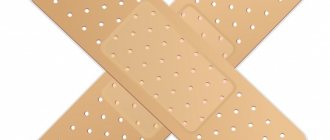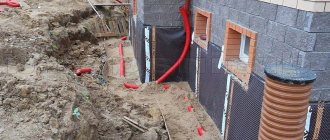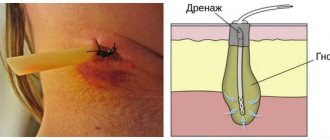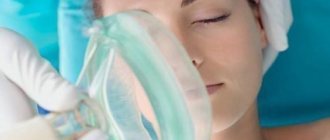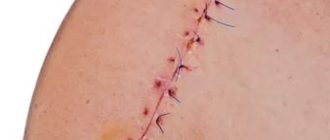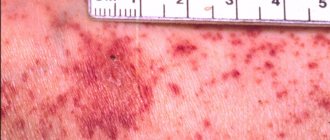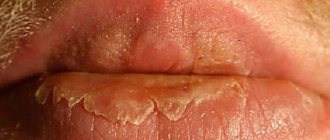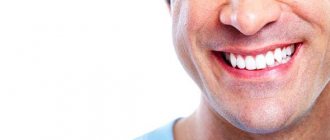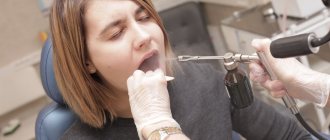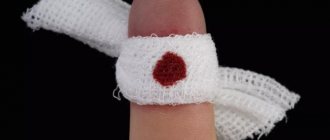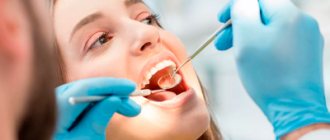Scarring
Healing of a granulating wound occurs through scarring and epithelization. At the final stage of healing, collagen fibers appear among the cells of the granulating tissue, the number of granules decreases, and the number of fibers increases. Ultimately, the fibrous substance passes into the connective tissue and forms a scar.
When wounds heal by primary intention, delicate scar tissue is formed, which tends to resolve.
In case of healing by secondary intention, a rough scar is formed, which will not be easy to get rid of.
Types of wound healing
According to the classification of I.V. Davydkovsky, the following types of wound healing are distinguished:
- closing the defect of the epithelial cover, which occurs when the upper epithelial layer is damaged;
- healing under a scab, or healing without a scar. Observed on mucous membranes in case of minor defects.
- healing by primary intention, or healing without suppuration. Characteristic of wounds with damage to the skin and tissue underneath.
- healing by secondary intention, or healing through suppuration and granulation. Occurs with extensive wounds, accompanied by foreign objects entering the wound, tissue necrosis, microbes and infections.
What does white plaque mean after tooth extraction?
Some patients notice that their gums turn white after tooth extraction. In the normal course of events, a whitish coating is nothing more than an “effusion” of fibrin from the blood, and indicates the beginning of epithelization of the wound. White plaque after tooth extraction usually appears on the surface of a blood clot (Fig. 8), as well as on the surface of a severely injured mucous membrane.
White plaque on the gum after tooth extraction -
In this case, the gum surrounding the socket has a pale pink color, when pressing on the gum there should be no purulent discharge (as in the video below), there should be no unpleasant odor from the socket, constant aching pain or pain when responding to cold and hot water (24stoma.ru) .
Stages of healing
The wound healing process goes through three main stages: inflammation, regeneration, and restoration of the epithelium.
The inflammation phase begins immediately after injury and in an uncomplicated state lasts for 4–5 days. During the hemostasis stage, platelets attach to sites of injury and cause a chemical reaction that activates fibrin, which forms a matrix network and binds platelets to each other. This is how blood clots form, blocking damaged blood vessels and stopping bleeding.
At the stage of proliferation and regeneration, the process of angiogenesis, collagen deposition, and the formation of granulation tissue (young connective tissue formed in places of defects) occurs. The regeneration stage can last 2–4 weeks depending on the size of the defect.
The final stage is the formation of the epithelium. Depending on the severity of the injury, the process can last from several weeks to a year or more.
Wound treatment
The choice of wound treatment method largely depends on their type (infected or necrotic, wet exuding or fibrous granulating, trophic ulcers or bedsores). Only a doctor can choose the optimal solution for treating each type of wound.
In addition, at each stage of wound healing, it is necessary to use a different agent: one that promotes the removal of exudate, the formation of granulation tissue, accelerating epithelization, etc.
When treating wounds, you need to remember that the wound does not heal on its own, but thanks to the body’s resources aimed at healing it. The immune, endocrine, and circulatory systems are involved in this process. A qualified doctor, along with treating the wound itself, will definitely prescribe a vitamin complex to maintain the body.
EPLAN: PROTECTION, FIRST AID, TREATMENT OF BURNS
EPLAN - SKIN PROTECTOR
Eplan is able to penetrate the upper layers of the Epidermis, completely fill the free intercellular space of the Epidermis and create an additional barrier layer, which provides skin protection for a long time. Skin protection after treatment with Eplan lasts up to 8 hours.
EPLAN does not disrupt the intercellular connections of the stratum corneum of the skin, so the skin does not lose its strength and natural protective functions.
When EPLAN is applied to intact skin: EPLAN does not penetrate into the deep layers of the epidermis (Basal layer) and does not affect the natural proliferation of Epidermal cells, does not change the water-lipid balance of the skin.
EPLAN IS EFFECTIVE AT ALL STAGES OF BURN DISEASE.
EPLAN reduces pain in the burn site by blocking irritation of damaged nerve endings in the affected area, protects the skin after a burn from environmental influences and infection, and does not allow the body to lose fluid through the burn wound.
EPLAN reduces the flow of decay products of dead tissue into the victim’s blood and prevents intoxication. When treating large areas of burns, such as the treatment of burns with boiling water, steam, sunburn, the use of the drug does not lead to toxic damage due to the formulation itself - EPLAN is not toxic and does not contain hormonal components.
When treating burnt skin, EPLAN acts as an antiseptic, preventing infection of the burn wound (both for first aid for a burn and for protection against secondary infection), and eliminates skin itching.
FIRST AID AND TREATMENT OF BURN WOUNDS: EPLAN TASKS TO PREVENT INFECTION
EPLAN has high antimicrobial activity. The reason for this is the lanthanides that make up Eplan.
Phagocytosis is a process in which special blood cells and body tissues (phagocytes) capture and digest pathogens of infectious diseases and dead cells.
The phagocytic activity of blood leukocytes leads to rapid cleansing of the wound from pathogenic microorganisms: leukocytes begin to more actively destroy bacteria, and EPLAN does not interfere with the access of oxygen to the wound area. Thus, the use of EPLAN in the treatment of burn wounds can be considered as a drug for local enhancement of the patient’s immune status.
EPLAN is non-toxic, made without the use of antibiotics or hormonals. The use of the drug EPLAN becomes especially important in first aid for burns with boiling water and treatment of infected wounds with a large affected area. EPLAN is effective in treating the following injuries: treatment of burns with boiling water, steam, treatment of sunburn, thermal burn.
EPLAN IS A CATALYST FOR SKIN REGENERATION.
The effect of EPLAN as a drug for skin regeneration, skin restoration, rapid healing of wounds and burns is due to the presence of lanthanides in its composition. Lanthanides influence the process of cell proliferation. Application of EPLAN to damaged skin, a burn or a wound, triggers the process of lanthanide exposure to the membranes of proliferating skin cells, which leads to stimulation of their cell division. EPLAN cannot be considered as an inhibitor of kylon tissue activity, therefore its effect is local and has no aftereffect after use.
EPLAN WITH BANDAGE
Eplan-cream and Eplan-solution for the treatment of wounds and burns EPLAN WITH BANDAGE: maintains a moist environment and temperature of the wound, prevents the formation of a scab, provides access of oxygen to the wound, does not create obstacles to the removal of exudate from the wound into a dressing, prevents infection of the wound. EPLAN does not contain toxic components, antibiotics, hormonal or analgesic agents, and wound dressings with EPLAN allow the bandage to easily come off the wound without damaging injured healing tissue.
How to speed up healing
The speed of wound healing varies. It depends on the nature of the injury and the individual characteristics of the patient, such as age, nutrition, and medications taken.
To speed up healing, it is necessary to provide optimal conditions for tissue regeneration at each stage. This role is fulfilled by therapeutic dressings designed for each stage of healing.
The method of hydrotherapy has a positive effect. Its essence consists in the sequential use of two dressings HydroClean and HydroTac. Using the first, the wound is cleaned, and then a second is applied, creating optimal conditions for granulation and epithelization.
HOW TO USE BURN OINTMENT IN FIRST AID
There are several stages in providing medical care for burns.
First stage (prehospital)
includes first aid for burns, provided in the form of self- and mutual aid at the scene of the incident. The burn surface for superficial burns is painful, so mechanical cleaning is allowed only in case of severe soil contamination by irrigation with antiseptic solutions. It is necessary to choose the optimal remedy for burns in a particular case. Burn wounds are covered with anti-burn dressings that do not stick to the wounds or sterile dressings with water-soluble ointments (levomekol, levosin, dioxykol, dermazin).
Instead of traditional remedies used in these cases, we recommend the universal, ready-to-use drug EPLAN (ointment and solution). EPLAN has unique properties for providing first aid, especially for sunburn.
EPLAN has the following useful properties: - pronounced absorbent activity (dehydrating activity is 13.5 times higher than that of a hypertonic NaCl solution); -low toxicity; -good permeability in fabric; - no irritating effect; - ease of application on surfaces.
If the ointment (cream) is immediately applied to the damaged areas, redness and inflammation disappear, and blisters with serous fibrous contents do not appear.
For local treatment of burns with EPLAN, two methods can be used: open (without bandages) and closed (with bandages), subsequent dressings are carried out daily or every other day until the wounds are completely healed.
What to do if the wound does not heal
Non-healing or chronic are wounds that do not respond adequately to therapy despite prolonged treatment. Such wounds are usually caused not by external factors, but by reasons hidden inside the body, leading to disruption of metabolic processes and, as a consequence, disruption of the wound healing process. This category includes trophic ulcers, bedsores, and diabetic foot ulcers. Before using any dressings, consult a doctor: therapy and treatment of wounds can only be prescribed to you by a doctor!
For the treatment of chronic wounds, HARTMANN has developed a two-bandage system - HydroClean Plus and HydroTac.
The HydroClean Plus cleansing dressing can be used at all stages of wound healing, effectively removing necrotic tissue and pathogenic bacteria from the wound surface. They get caught in the absorbent layer and die under the influence of the antiseptic. The HydroTac dressing has absorbent and moisturizing properties and also protects the wound from secondary infection.
With the help of the hydrotherapy system, many patients have been able to significantly alleviate suffering and improve their quality of life.
Pharmacies Pharmakon
Acute traumatic wound.
Depending on the type and circumstances of the accident, so-called “traumatic wounds” vary greatly in the degree of tissue damage. Ranging from shallow skin lesions to complex wounds that can affect tendons, muscles, nerve fibers, blood vessels, bones or internal organs. Sometimes the skin remains intact, but the subcutaneous tissue and bones are damaged. This is called a "closed wound", as opposed to an "open wound". A large wound or a small one, serious or not very serious - the more effectively the first aid was provided, the greater the chances of its successful healing. There are two types of wound treatment, namely: preliminary and prescribed by a doctor. Pre-treatment of wounds includes all first aid measures. Depending on the severity of the wound, prescribed or primary wound treatment is carried out by surgeons in clinics or hospitals. Depending on the nature of the injury, the first aid provider may be faced with a wide variety of situations, each requiring an appropriate response. First aid for abrasions, scrapes or cuts to the skin can sometimes take the form of prescribed treatment.
Generally accepted rules and recommendations for wound treatment
When treating wounds, it is advisable to follow the following rules and recommendations:
— When providing first aid, if possible, sit or lay the victim down, while the affected part of the body should be at maximum rest.
— To avoid possible contamination or infection, do not touch wounds and the skin around them with bare hands (use disposable gloves).
— As soon as you find a wound, it must be covered with a sterile cloth and secured with a bandage (for example, use a first aid kit) to protect the wound from dust and possible contamination by germs. If you do not have sterile dressing material on hand, use ordinary dry cloth, which, if possible, should be ironed (and thus disinfect the victim).
— It is necessary to stop the bleeding as quickly as possible (see section “Hemostasis”). In emergency situations, there is an unwritten rule: stopping the bleeding is more important than avoiding infection!!!
- When treating wounds, you should not use medicinal products such as powders, aerosols or oils at your own discretion, as this may make the wounds more difficult to access and may result in painful treatment.
— If foreign bodies get into the wound, they must be removed by a doctor. If a foreign body protrudes from the wound, it must be fixed before transporting the victim (see section “Foreign bodies”) with a bandage to the bandage.
- Wounds should receive medical treatment within the first 6 hours. Recommendation 1: In principle, even the smallest wound can lead to tetanus. This is why we strongly recommend appropriate vaccination. Recommendation 2: With the exception of minor skin scrapes and abrasions and cuts, wounds should be examined and treated by a physician. The purpose of first aid is to prevent further entry of aggressive substances and microorganisms into the wound.
Abrasions and scratches on the skin.
Skin abrasions and scratches occur when the skin rubs against a rough surface. For example, this can happen when falling. In this case, the superficial layers of skin tissue are removed, while the smallest blood vessels located in the papillary layer of the skin are damaged. The result is pinpoint bleeding and exudation. Large abrasions and scratches on the skin are accompanied by very painful sensations, as a large number of nerve endings are exposed. If pathogens enter a wound and infect it, healing the wound may be difficult. In general, abrasions and scratches on the skin heal fairly quickly and do not leave scars, since the subcutaneous tissue remains intact. In the case of small and only slightly dirty wounds, it is enough to rinse them under tap water, apply an antiseptic treatment and apply a bandage that does not stick to the wound. For more contaminated wounds, they need to be washed more thoroughly. Depending on the location and size of the wound, there are several ways to do this. For wounds on the hand, fingers or toes, taking antiseptic baths gives good results. If you have abrasions or scrapes on your knee, elbow, or torso, we recommend gently covering the wound with a damp gauze or cloth. After you have dried the wound, you can begin antiseptic treatment. Regular dressings tend to stick to bleeding abrasions and scratches on the skin. In this case, it is preferable to use dressings and plasters that will not stick to the wound. Such (atraumatic) dressings should be changed daily if possible. Modern wound dressings, more suitable for first aid due to their hydroactive properties, create and maintain a moist environment on the wound surface. As a result, they actively promote the healing process. In this case, there is no need to change the patch every day. You save time and avoid pain. In case of large (palm-sized) tissue damage or heavily contaminated abrasions or scratches on the skin, you need to consult a doctor who will remove any remaining dirt or foreign bodies from the wound and perform an antiseptic treatment.
Cuts
Cut to the phalanx of a finger. At home, cuts most often occur as a result of careless handling of sharp objects such as knives or broken glass. These cuts are characterized by smooth edges of the wound, without damage to adjacent areas of the skin and fairly heavy bleeding. This often looks very dangerous, but the bleeding from the wound flushes out any remaining dirt and pathogens. Therefore, small wounds usually heal without any problems. Cuts with a knife that has previously been used to cut meat pose a great threat, since a large number of pathogenic microorganisms accumulate on the knife. Equally dangerous are deep cuts to the knuckles and fingers. In these cases, there is a risk of damage to nerve fibers or tendons. Treatment of small superficial cuts: - Do not immediately stop the bleeding to wash away any remaining dirt and pathogens. — Perform antiseptic treatment of the wound. — Apply a suitable, preferably bactericidal, plaster to the wound. - Stop excessive bleeding using external compression. To achieve this, apply a folded gauze bandage or rolled gauze bandage to the wound and hold it firmly for a while. Treatment of larger and deeper cuts: - Be sure to see a doctor! — Cuts to the fingers that are accompanied by numbness and difficulty moving should also be examined by a doctor. Cuts from a knife or other sharp objects that have previously been used to cut meat also require examination by a doctor. — For facial cuts, you should also see a doctor to prevent scarring. As a rule, cuts are fairly easy to treat. Often there is not even a need for stitches. Instead, the doctor uses special adhesive strips to tighten the wound.
Puncture wounds
Puncture wounds may be caused by sharp glass and contain glass shards. Puncture wounds are caused by objects with sharp edges. The small puncture wounds that we often encounter in everyday life are usually caused by: nails, needles, scissors, knives or pieces of broken glass. Sometimes the source of the puncture wound remains in the wound itself. It must be removed during first aid, or later during a visit to the doctor. Puncture wounds usually look fairly harmless from the outside, but they can be quite deep. When receiving a puncture wound, there is a risk of damage to nerve fibers and tendons, as well as internal organs. This may also be accompanied by internal bleeding. There is also an increased risk of infection, even with minor puncture wounds, such as those caused by thorns or splinters, as pathogens penetrate the tissue along with the foreign body. Remove small splinters stuck under the skin using tweezers. Then disinfect the wound and apply a plaster or sterile wound dressing. Foreign bodies and splinters should not be removed yourself unless you are able to determine how deep they have penetrated the skin. It can damage blood vessels and cause bleeding. As a first aid measure, you can cover the wound area with foreign bodies stuck in it with a clean cloth. With the exception of minor splinters, other wounds should be treated immediately by a doctor. You should see a doctor if you are unable to completely remove the splinter or if you experience tissue inflammation. Since foreign body debris can later be localized using x-rays, take pieces of the foreign body with you to show your doctor.
Crush wounds, lacerations and gaping wounds.
Fractured and gaping wounds are usually caused by blunt objects, while lacerations are usually caused by unusual sharp objects. Gaping wounds usually form on parts of the body with minimal distance from the skin to the bones, such as the head or tibia. Crushed, torn and gaping wounds usually have ragged edges rather than smooth ones. In places of such wounds, as a rule, the skin changes color and a hematoma forms. This is caused by bleeding into nearby tissue. In the case of lacerations, adjacent tissue is usually not damaged as much. All three types of wounds have one thing in common: a high risk of infection through the torn edges of the wound. The risk of infection is higher in the case of lacerations, since the objects used to inflict these wounds are usually heavily contaminated. Treatment and treatment of all characteristic, more or less serious, crushed and gaping wounds should be carried out by a doctor. You can treat only small superficial crushed and gaping wounds, or not too lacerated wounds, on your own. Treat the wound with antiseptic treatment and apply a bactericidal patch.
Bite wounds
Animal bites are associated with a high risk to human health. The result can be more than just serious soft tissue damage. A bite may be accompanied by the ingestion of highly pathogenic microorganisms along with the animal's saliva. In those places where rabid animals have appeared (as official sources of information warn about), there is an increased risk of being bitten by a dog, or less often by a cat. Most often, wild animals suffer from rabies, especially foxes and badgers, which people can fearlessly allow close to them. Not every bite from a rabid animal automatically means that the person bitten will become infected with rabies. If this does happen, and if the necessary measures are not taken, the person will experience the following symptoms: irresistible seizures and suffocation. Wounds from animal bites and wounds from bites from other people should only be treated and handled by a doctor. As first aid, you can apply a sterile gauze bandage to stop the bleeding. If heavy bleeding occurs, a pressure bandage can be used. Apply a sterile gauze bandage to the wound and secure it with a gauze bandage. Then apply a standard first aid dressing over the gauze bandage, applying some pressure. If necessary, wrap the applied bandages again with a gauze bandage. With some exceptions (bites to the child's face), these bite wounds do not require stitches. They are treated with antiseptics in open form. Your doctor will decide which treatment options are most appropriate. You should also discuss your risk of contracting rabies and the need for appropriate vaccinations with your doctor. If you are bitten by an animal suspected of having rabies, you should be vaccinated immediately. In principle, preventive treatment with antibiotics can be carried out, and if protection against tetanus is insufficient, appropriate vaccination should be carried out. Children are susceptible to bites from rabid animals to a much greater extent, since they are not yet able to adequately assess the behavior of the animal. As a result, when children find themselves close to an animal, they often simply forget that it can bite or scratch. Therefore, adults have a responsibility to teach their children how to behave in the presence of animals.
Signs of wound inflammation
How do you know if a wound is inflamed?
When pathogenic microorganisms enter the wound, inflammation begins. The inflammation that has begun in the wound is indicated by the following: redness, swelling, increased temperature and pain. To be more precise, the characteristic signs of wound inflammation are the following:
- the edges of the wound swell and thicken;
- the area around the wound gradually begins to redden and become inflamed;
- a yellow or purulent coating forms on the wound;
- applying pressure to the wound becomes more and more painful;
- sometimes it comes to fever and chills. A wound infection may not spread beyond the wound itself. However, it can spread to deeper tissues and lymphatic vessels. When an inflammatory reaction occurs in the lymphatic vessels, a red stripe forms around the wound. On the arm, it can spread to the armpit area, and on the leg, it can reach the groin area. In common parlance, this infection is mistakenly called blood poisoning. However, the correct name for this process is inflammation of the lymphatic vessels (lymphangitis) or nodes (lymphadenitis), that is, inflammation of one or more lymphatic vessels caused by the penetration of pathogenic microorganisms into the lymphatic capillaries. This process can regress under the influence of drug treatment. If such an injury or damage occurs, the greatest attention should be paid to the proper treatment of the resulting wound. Choosing the right treatment will help avoid infection. If you are in any doubt about the steps to take, consult your doctor.
Consulting addresses:
1. Izhevsk, st. Kirova, 109, tel.
Opening hours: 8.00 - 23.00 without lunch and weekends
2. Izhevsk, st. Likhvintseva, 46, tel.
Opening hours: 8.00 - 24.00 without lunch and weekends
Back to section
